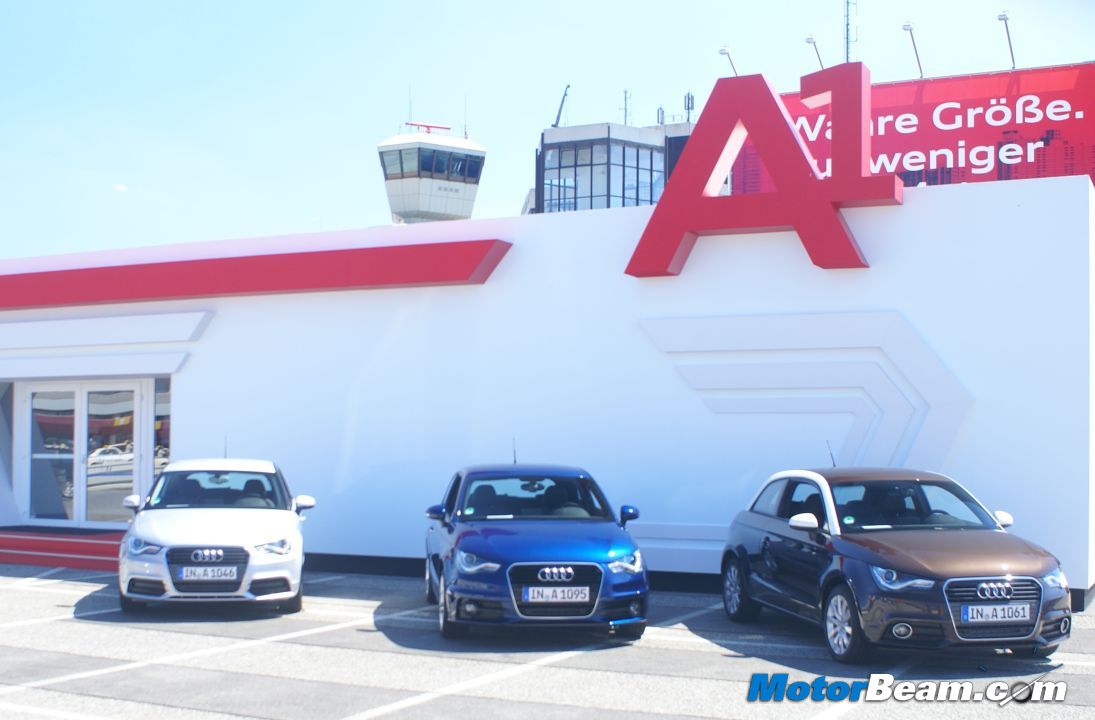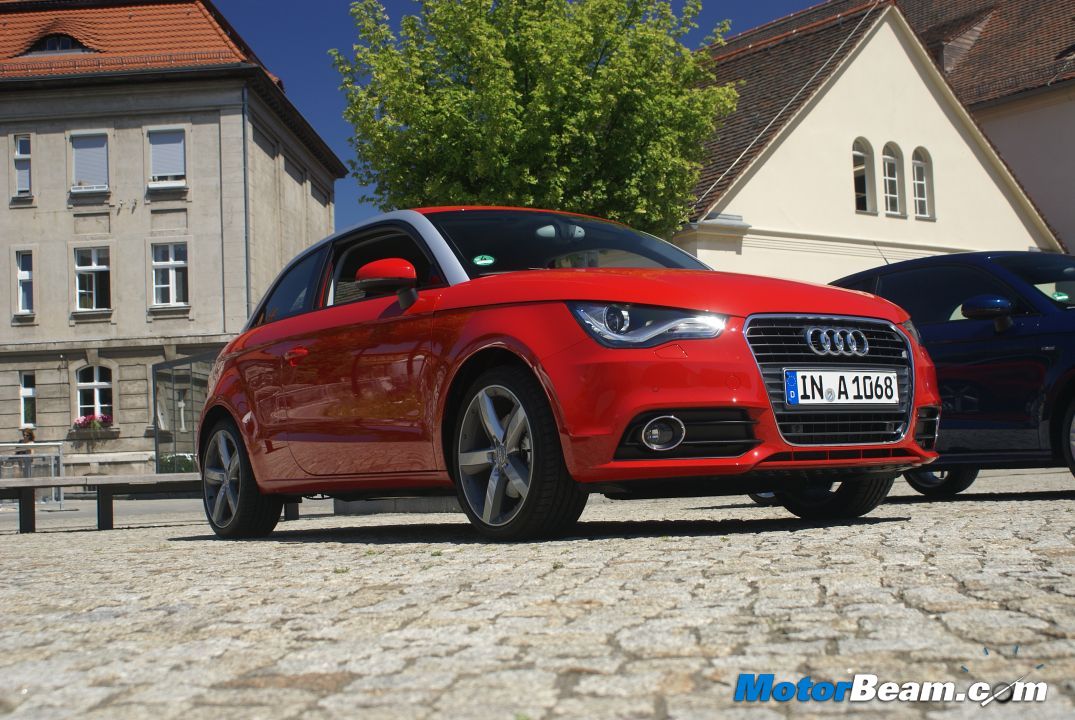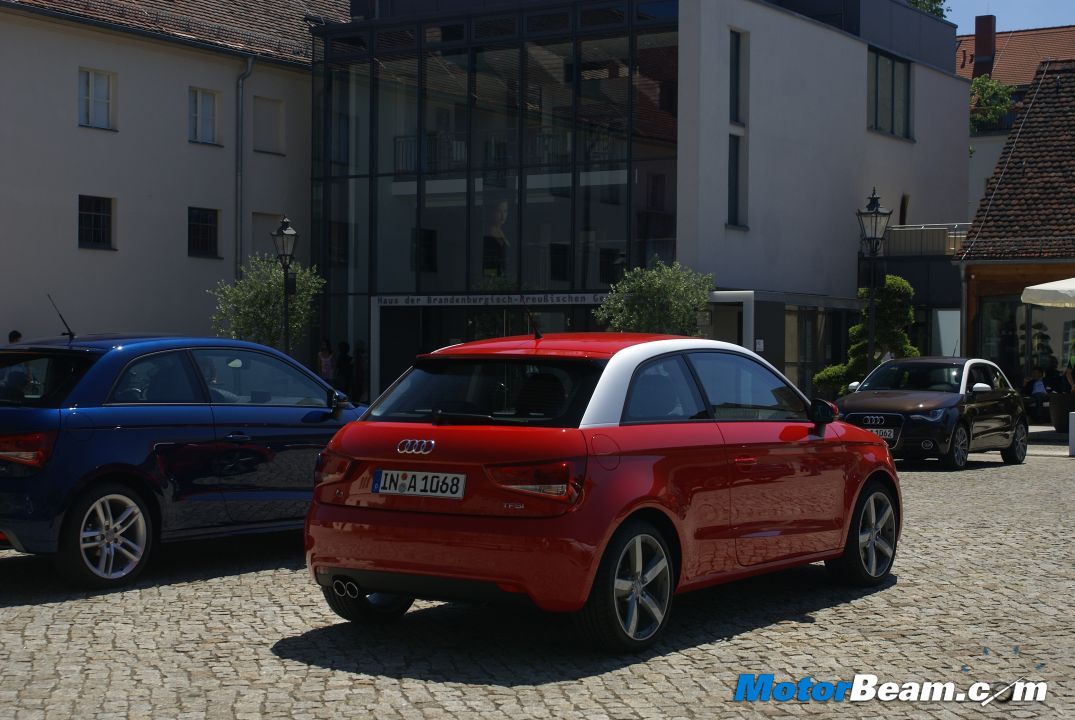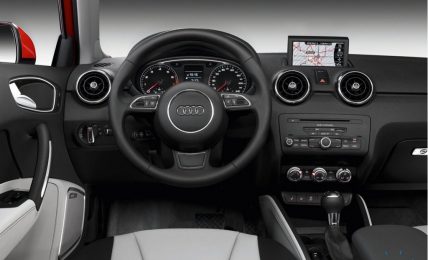Exteriors – Although the Audi A1 is mechanically based on the Volkswagen Polo, its production design is tightly integrated into the brand’s design language and so is its performance and handling. What’s more, Audi has taken a lot of ideas and innovations from its 2007 Audi A1 project quattro concept car and converted them into series production model. On that account the A1 is not a re-bodied Polo, rather a re-engineered model.
“The design of the Audi A1 is neat and attractive”
The front end bears an unmistakable family resemblance with bigger siblings, but features unique accents and detailing. The single-frame grille, for example, is harmoniously integrated into the front end and with its angled top corners represents a new evolutionary stage. Its braces are arranged horizontally to emphasize the width of the front. The large, plastically modeled air intakes with their horizontal bars also contribute to the sporty appearance of the Audi A1. The fog lights are located in their outer corners. The three-dimensionally styled headlights also have their own special look. A strongly curved wing structures the interior of the headlights. As with every Audi, the daytime LED running lights are standard which appear as a homogenous strip that follows the profile of the wing. With the optional xenon plus units, the daytime running lights are implemented using LEDs and a light guide.
However, the most powerful design element in the car is what Audi says is the ‘tornado line’. It’s most prominent when the car is viewed from the side where the upper edge of the bonnet extends below the side windows to the rear end, which reminds one of the TT. According to the designers, it is the point where the chiseled bonnet meets the mudguards that defines the point of origin for this design element called the tornado line which then continues over the doors to the rear end. Meanwhile, there’s an extra crease-line running closely and precisely above the wheel wells, which provide shelter to wheels measuring up to 18in in diameter.
As part of the lifestyle-cum-bespoke options to customers, the sportily flowing roof arch will be available in one of four contrasting colours. The arch flow into a C-pillar is flatter than on the TT, giving the rear end a dynamic outline that is further emphasized by the roof spoiler.
When viewed from the rear, the car resembles the Volvo C30 in some ways as the rear is wider. The luggage compartment is accessed through a liftgate. Rear lamps are combined with xenon bulbs and LEDs, but cannot be seen when the luggage compartment hatch is open. Hence, Audi decided to include additional LED lamps in its broad side flanks. Meanwhile, a sporty black diffuser in the skirt at the bottom of the rear valance signs off the rear while depending on the engine, the exhaust system ends in one or two tailpipes on the left side. With 0.32 coefficient of drag for the base model, the newest Audi should be among the most aerodynamic cars in its class.
Head over to the next page to read about the Audi A1’s interiors and powertrains.






